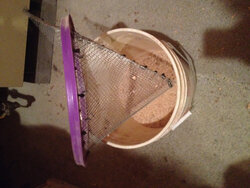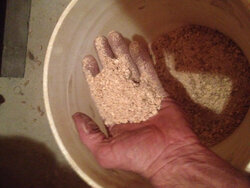Ok folks here it is, my Wiseway experience.
Situation: Long time wood burner tired of the hassle and mess. Concerned about interruptions in electricity. Wiseway seemed to meet the need. 1700 sq ft. Multi-level house. Interior chimney which exits at the highest point of the roof - excellent draft. 24ft chimney lined with 4" stainless pipe to the thimble, 3 ft 90 degree horizontal into the room, 2nd 18" 90 degee vertical to bring it down to the stove. House features tight construction that required opening of windows often during the winter when using my old VT Castings - too hot!
Dealer in OR was great to work with. Timely, informational, competent in providing info to get my Class A chimney set-up correct.
Fuel: 100% hardwood pellets, <1% ash. Also 80/20 blend, <1% ash. 100% Softwood not easily found.
Stove: After discussing with dealer my situation and fuel types available, opted for the GW2014 model with the window, and with a modified burn basket suitable for hardwood.
Performance: (Note: I REALLY wanted this stove to work. Watched online customer review vids and did plenty of reading. No pre-judging here). Your situation and setup will vary from mine, but for my situation, the stove, while good, is simply not quite suitable for this set up. On a clean, fresh start, stove will fire to 650-700 degrees as advertised, no problem. Stays cooking along at that temp (or lower as needed) for about 4 hours. At that time, ash begins to clog the primary burn basket and secondary burn plate with increasing frequency requiring manipulations of the burn basket with (tool of choice: wire coat hanger), and a quick open/close of the secondary burn plate to clear any collected ash. Some ash also collects in the bottom exhaust tube. Failing to manipulate the burn chambers as above will ultimately result in a clogged primary burn basket, secondary burn chamber, and a reducing temperature. While this is to be expected to some degree (the Wiseway after all IS a WOOD STOVE that burns pellets), in my setup, the longer the stove is in operation, the more frequent the manipulation must be to keep the temp constant. This, and the somewhat short (relatively speaking) duration of constant temperature, is a bit disappointing for my specific setup. Approaching 10 - 12 hours of operation, manipulation is frequent at every 40 minutes or so in order to maintain a constant temp.
Since the stove is so easy to start, I have helped alleviate this problem by simply shutting the stove down after 12 hours, and with a small shop vac, cleaning out the burn chambers and exhaust tube. Upon relight, the process starts over: 4'ish hours of trouble free heat with minimal supervision, followed by burn basket manipulation of increasing frequency until the 10 to 12 hour mark is reached.
While this is not particularly troubling to me considering that I work from home, the frequency in which I would have to manipulate my old VT Castings, and the pain-in-the-butt factor of dealing with cord wood, it does pose some timing challenges with regard to overnight burns, or burns when I am not in attendance. Starting from a "clean" stove too early in the afternoon or evening results in a situation where the stove simply will not perform hot enough, long enough, to sufficiently heat throughout the night.
Starting in the evening is better, but does require a couple of mid-night checks in order to have heat above 300 degrees by 6 AM.
Unfortunately in my situation, even with a clean start, the stove will not perform sufficiently without manipulation for longer than 4 hours. It WILL continue to burn, but at a steadily decreasing temp.
As for heating, I can say that my VT Castings Encore (the smaller unit) would put out more BTU's than we could handle. My house was easily 80 degrees all winter and hotter if we let it. On the coldest of days (-10 to -15 below), house was still 70-75 or better.
In comparison, Wiseway at full throttle on a -10 degree day kept the house at a comfortable 68, but only until the performance began to suffer. At that time, manipulations of increasing frequency (as noted above) did help.
Bottom line, if you are in a similar setup as mine, and can be in attendance with the stove during its burn cycle (for my setup 10-12 hours at wide open - that is, damper shut and daisy wheel door going from closed to open to completely off toward the end of a cycle to keep the air flow up), and don't mind an increasing frequency of manipulation, you're good. If you need to set-it-and forget it while you go to work or go for an 8 hr sleep, make sure to really do your homework first. Chimney, fuel, location of stove in your home, burn basket, etc will have an effect. I have not tried with a 100% softwood blend yet, but did use the 80/20 which resulted in slightly lower temps and similar ash build up. Feel free to reach out - I love the potential of this stove, but it will not be suitable for all applications.
Situation: Long time wood burner tired of the hassle and mess. Concerned about interruptions in electricity. Wiseway seemed to meet the need. 1700 sq ft. Multi-level house. Interior chimney which exits at the highest point of the roof - excellent draft. 24ft chimney lined with 4" stainless pipe to the thimble, 3 ft 90 degree horizontal into the room, 2nd 18" 90 degee vertical to bring it down to the stove. House features tight construction that required opening of windows often during the winter when using my old VT Castings - too hot!
Dealer in OR was great to work with. Timely, informational, competent in providing info to get my Class A chimney set-up correct.
Fuel: 100% hardwood pellets, <1% ash. Also 80/20 blend, <1% ash. 100% Softwood not easily found.
Stove: After discussing with dealer my situation and fuel types available, opted for the GW2014 model with the window, and with a modified burn basket suitable for hardwood.
Performance: (Note: I REALLY wanted this stove to work. Watched online customer review vids and did plenty of reading. No pre-judging here). Your situation and setup will vary from mine, but for my situation, the stove, while good, is simply not quite suitable for this set up. On a clean, fresh start, stove will fire to 650-700 degrees as advertised, no problem. Stays cooking along at that temp (or lower as needed) for about 4 hours. At that time, ash begins to clog the primary burn basket and secondary burn plate with increasing frequency requiring manipulations of the burn basket with (tool of choice: wire coat hanger), and a quick open/close of the secondary burn plate to clear any collected ash. Some ash also collects in the bottom exhaust tube. Failing to manipulate the burn chambers as above will ultimately result in a clogged primary burn basket, secondary burn chamber, and a reducing temperature. While this is to be expected to some degree (the Wiseway after all IS a WOOD STOVE that burns pellets), in my setup, the longer the stove is in operation, the more frequent the manipulation must be to keep the temp constant. This, and the somewhat short (relatively speaking) duration of constant temperature, is a bit disappointing for my specific setup. Approaching 10 - 12 hours of operation, manipulation is frequent at every 40 minutes or so in order to maintain a constant temp.
Since the stove is so easy to start, I have helped alleviate this problem by simply shutting the stove down after 12 hours, and with a small shop vac, cleaning out the burn chambers and exhaust tube. Upon relight, the process starts over: 4'ish hours of trouble free heat with minimal supervision, followed by burn basket manipulation of increasing frequency until the 10 to 12 hour mark is reached.
While this is not particularly troubling to me considering that I work from home, the frequency in which I would have to manipulate my old VT Castings, and the pain-in-the-butt factor of dealing with cord wood, it does pose some timing challenges with regard to overnight burns, or burns when I am not in attendance. Starting from a "clean" stove too early in the afternoon or evening results in a situation where the stove simply will not perform hot enough, long enough, to sufficiently heat throughout the night.
Starting in the evening is better, but does require a couple of mid-night checks in order to have heat above 300 degrees by 6 AM.
Unfortunately in my situation, even with a clean start, the stove will not perform sufficiently without manipulation for longer than 4 hours. It WILL continue to burn, but at a steadily decreasing temp.
As for heating, I can say that my VT Castings Encore (the smaller unit) would put out more BTU's than we could handle. My house was easily 80 degrees all winter and hotter if we let it. On the coldest of days (-10 to -15 below), house was still 70-75 or better.
In comparison, Wiseway at full throttle on a -10 degree day kept the house at a comfortable 68, but only until the performance began to suffer. At that time, manipulations of increasing frequency (as noted above) did help.
Bottom line, if you are in a similar setup as mine, and can be in attendance with the stove during its burn cycle (for my setup 10-12 hours at wide open - that is, damper shut and daisy wheel door going from closed to open to completely off toward the end of a cycle to keep the air flow up), and don't mind an increasing frequency of manipulation, you're good. If you need to set-it-and forget it while you go to work or go for an 8 hr sleep, make sure to really do your homework first. Chimney, fuel, location of stove in your home, burn basket, etc will have an effect. I have not tried with a 100% softwood blend yet, but did use the 80/20 which resulted in slightly lower temps and similar ash build up. Feel free to reach out - I love the potential of this stove, but it will not be suitable for all applications.
Last edited:


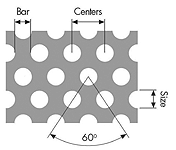
 Are you out there? Worst case, give him a call or stop on over on the Facebook page and ask. (541) 946-8108
Are you out there? Worst case, give him a call or stop on over on the Facebook page and ask. (541) 946-8108 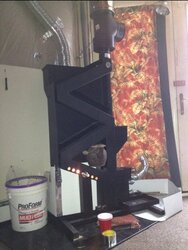
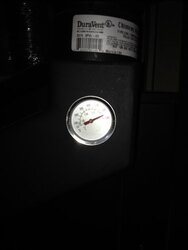
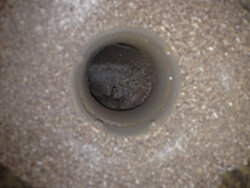
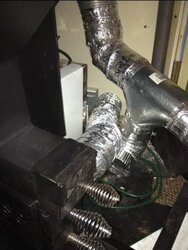
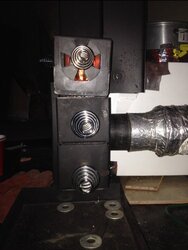
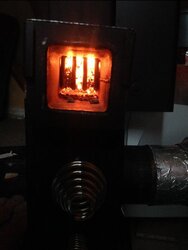
![Image76[1].gif Image76[1].gif](https://www.hearth.com/talk/data/attachments/151/151653-348ac7ca8776f1b7331a6145df637f5d.jpg)
